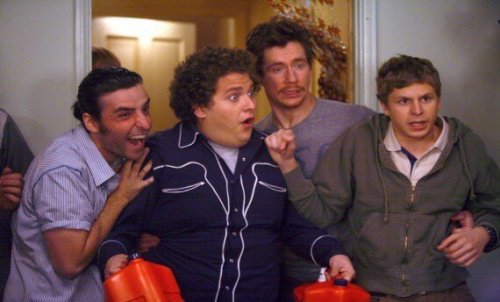Obesity on Television

Obesity is not well-represented on television. In general, characters on the small screen tend to conform to the conventional definition of beauty. Studies show that this lack of representation of a specific body type can translate into harassment towards overweight people.
In recent years, TV series producers have started to include more racially and ethnically diverse characters. This diversity, however, almost never includes representation of people who weigh more.
What is obesity?
Obesity is the mass accumulation of fat tissue in the body. An increase in body fat also implies an increase in overall weight. In some cases, thyroid problems or other hormonal imbalances are the causes of weight gain. However, the most common cause of being overweight is a nutritional imbalance.

When you consume more calories than you burn, your body stores extra calories as fat. That’s why athletes are able to eat diets high in carbohydrates and fat. On the other hand, people with a sedentary lifestyle need to make sure their diet corresponds to the number of calories they burn.
Studies warn that being overweight puts you at a high risk for cardiovascular diseases. Obesity also increases your risk of developing diabetes, hypertension, some types of cancer, blood clots, and heart attacks.
Obesity is more common in industrialized nations. That’s because the pace of life in these countries leaves little time for cooking or eating. People who are overweight due to their diet tend to prefer fast food, which has a high sugar content.
Beauty and fashion have no place for overweight people
Over time, the idea of beauty has changed. At the beginning of the 20th century, people thought that the “perfect” woman was shaped like an hourglass. To achieve this perfect figure, women used very tight corsets. After the Second World War, thin and pale became the new definition of beautiful. With the arrival of commercial cinema, big movie stars’ style became popular. Black hair cut in a short bob and pants were all the rage for women. Dark eyebrows and red lips on pale skin became the standard for beauty.
During the 20th century, thin bodies were considered beautiful. Fashion and clothes were designed with thin men and women in mind.
It’s possible that this happened because no one had much of a chance to gain weight. The countries that participated in the war suffered from periods of famine and scarcity. Their economies hadn’t recovered enough to provide for their citizens. However, when people started to gain weight, the standard of beauty stayed the same. Women with small waists and slim thighs represented beauty for most of society.
Since then, a whole industry has built up around the idea of denying normal body size. The industry rejects normal, real bodies. Fashion designers continue to create clothing for people that only exist on the runway during fashion week.
Beauty on television
The television and movie industries adhered to the fashion industry standard of beauty. Though television and movies are relatively new industries, they have a significant impact on how societies are built. The audiovisual material offers examples and role models for the viewers to follow.
The movie industry chooses to avoid showing people whose weight varies from the “conventional” weight. In that sense, obesity is made invisible, just like different racial groups. Obesity hardly ever comes up in movies, much less on TV.
When obese or overweight characters appear on TV, they tend to be caricatures. They’re obsessed with losing weight or are the butt of the joke. Obese people are often harassed and ridiculed for their weight. That being said, in the 21st century we saw subtle but definitive changes in the television industry.
You hardly see obesity on television or at the movies. It has been invisible for ages.

Obesity on television means genuine characters
These days, television is slowly changing. More racially diverse characters appear on TV shows. The most popular television shows have more believable characters that address stereotypes. In spite of this positive step forward, there is still very little representation of obesity on television.
More producers are trying to represent real bodies on TV, but there are groups that are against showing obesity on television. There are online magazines, members of the press, and even medical groups that think it’s wrong. People who argue against representing obesity say that it’s for health reasons. They say that it’s not right to show obese people in a positive light. If people start doing that, they believe that it will normalize obesity for viewers. The viewers might believe that obesity is harmless, even desirable.
Nevertheless, many producers believe that showing obesity on television is a way to be inclusive. Showing obese people means that their characters are a genuine reflection of real life. In that sense, we agree with them. It’s important to show the diversity of our society. That’s the only way we’ll be able to achieve equality someday.
Obesity is not well-represented on television. In general, characters on the small screen tend to conform to the conventional definition of beauty. Studies show that this lack of representation of a specific body type can translate into harassment towards overweight people.
In recent years, TV series producers have started to include more racially and ethnically diverse characters. This diversity, however, almost never includes representation of people who weigh more.
What is obesity?
Obesity is the mass accumulation of fat tissue in the body. An increase in body fat also implies an increase in overall weight. In some cases, thyroid problems or other hormonal imbalances are the causes of weight gain. However, the most common cause of being overweight is a nutritional imbalance.

When you consume more calories than you burn, your body stores extra calories as fat. That’s why athletes are able to eat diets high in carbohydrates and fat. On the other hand, people with a sedentary lifestyle need to make sure their diet corresponds to the number of calories they burn.
Studies warn that being overweight puts you at a high risk for cardiovascular diseases. Obesity also increases your risk of developing diabetes, hypertension, some types of cancer, blood clots, and heart attacks.
Obesity is more common in industrialized nations. That’s because the pace of life in these countries leaves little time for cooking or eating. People who are overweight due to their diet tend to prefer fast food, which has a high sugar content.
Beauty and fashion have no place for overweight people
Over time, the idea of beauty has changed. At the beginning of the 20th century, people thought that the “perfect” woman was shaped like an hourglass. To achieve this perfect figure, women used very tight corsets. After the Second World War, thin and pale became the new definition of beautiful. With the arrival of commercial cinema, big movie stars’ style became popular. Black hair cut in a short bob and pants were all the rage for women. Dark eyebrows and red lips on pale skin became the standard for beauty.
During the 20th century, thin bodies were considered beautiful. Fashion and clothes were designed with thin men and women in mind.
It’s possible that this happened because no one had much of a chance to gain weight. The countries that participated in the war suffered from periods of famine and scarcity. Their economies hadn’t recovered enough to provide for their citizens. However, when people started to gain weight, the standard of beauty stayed the same. Women with small waists and slim thighs represented beauty for most of society.
Since then, a whole industry has built up around the idea of denying normal body size. The industry rejects normal, real bodies. Fashion designers continue to create clothing for people that only exist on the runway during fashion week.
Beauty on television
The television and movie industries adhered to the fashion industry standard of beauty. Though television and movies are relatively new industries, they have a significant impact on how societies are built. The audiovisual material offers examples and role models for the viewers to follow.
The movie industry chooses to avoid showing people whose weight varies from the “conventional” weight. In that sense, obesity is made invisible, just like different racial groups. Obesity hardly ever comes up in movies, much less on TV.
When obese or overweight characters appear on TV, they tend to be caricatures. They’re obsessed with losing weight or are the butt of the joke. Obese people are often harassed and ridiculed for their weight. That being said, in the 21st century we saw subtle but definitive changes in the television industry.
You hardly see obesity on television or at the movies. It has been invisible for ages.

Obesity on television means genuine characters
These days, television is slowly changing. More racially diverse characters appear on TV shows. The most popular television shows have more believable characters that address stereotypes. In spite of this positive step forward, there is still very little representation of obesity on television.
More producers are trying to represent real bodies on TV, but there are groups that are against showing obesity on television. There are online magazines, members of the press, and even medical groups that think it’s wrong. People who argue against representing obesity say that it’s for health reasons. They say that it’s not right to show obese people in a positive light. If people start doing that, they believe that it will normalize obesity for viewers. The viewers might believe that obesity is harmless, even desirable.
Nevertheless, many producers believe that showing obesity on television is a way to be inclusive. Showing obese people means that their characters are a genuine reflection of real life. In that sense, we agree with them. It’s important to show the diversity of our society. That’s the only way we’ll be able to achieve equality someday.
This text is provided for informational purposes only and does not replace consultation with a professional. If in doubt, consult your specialist.







